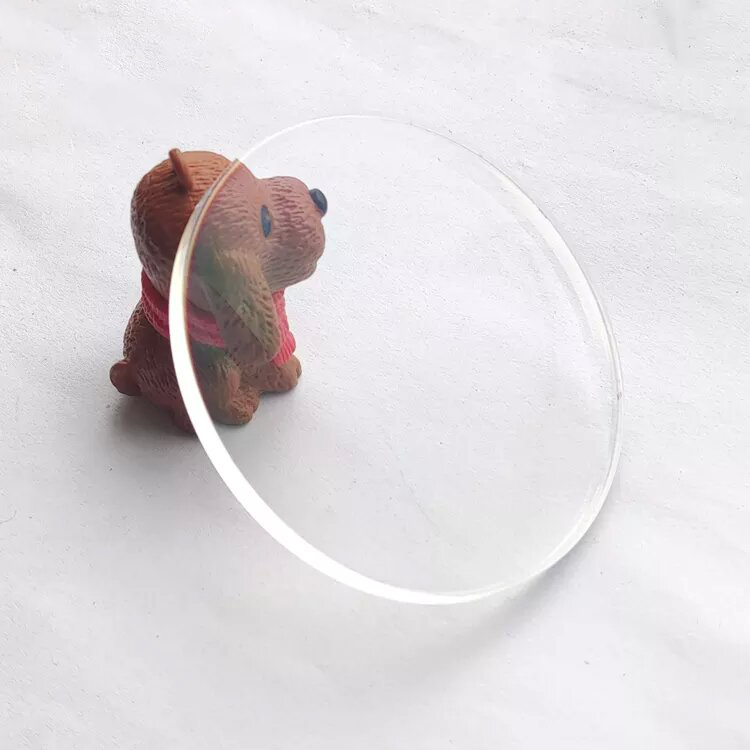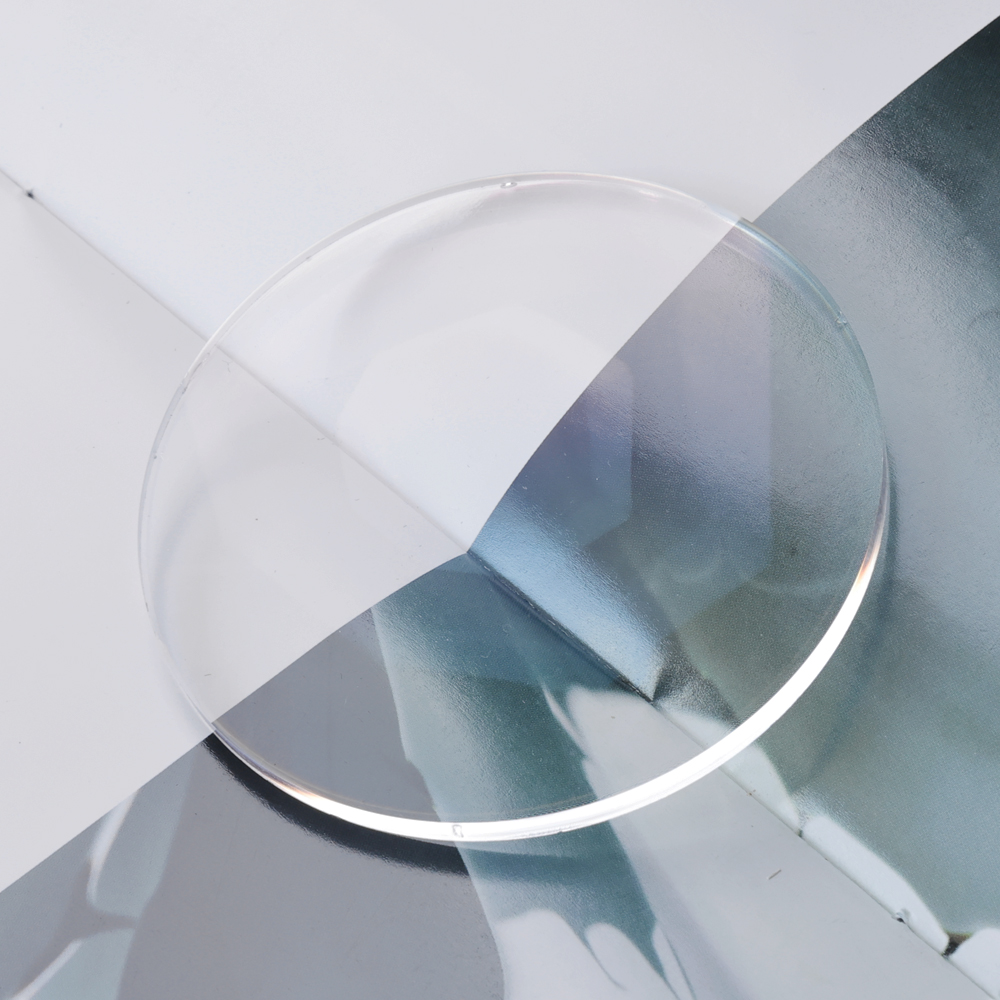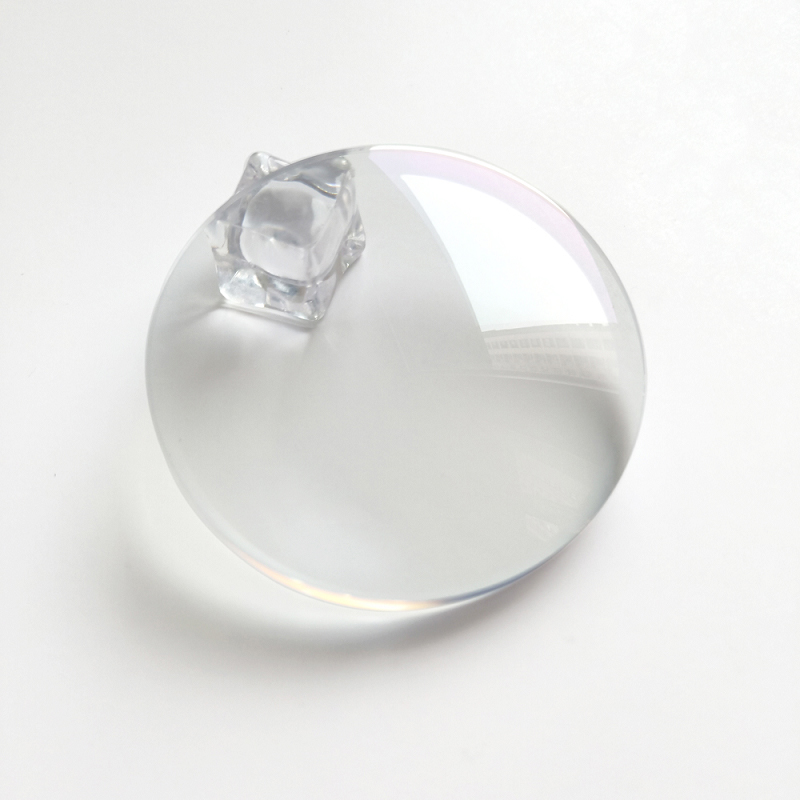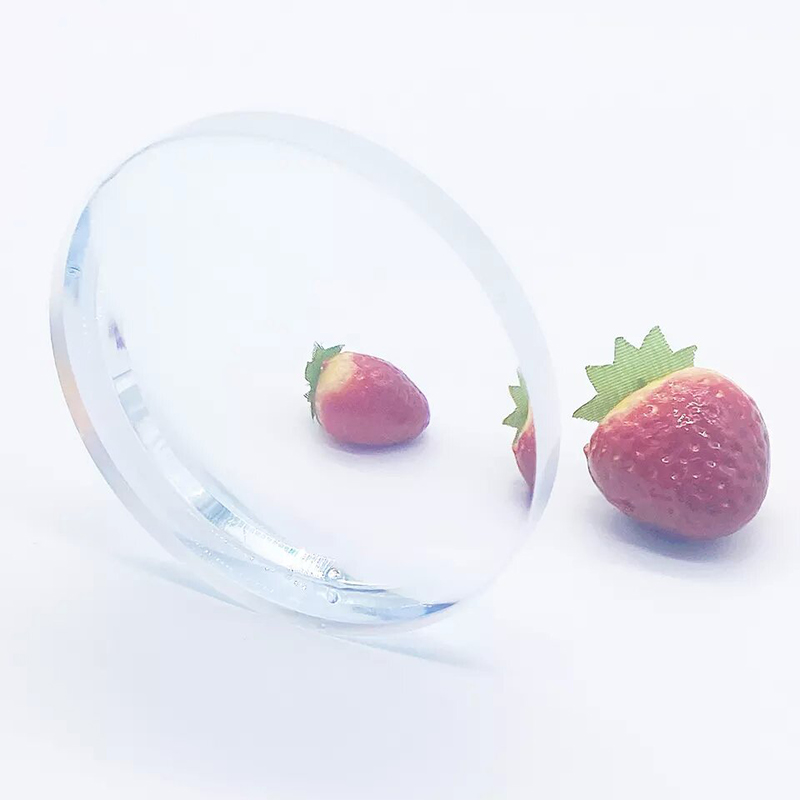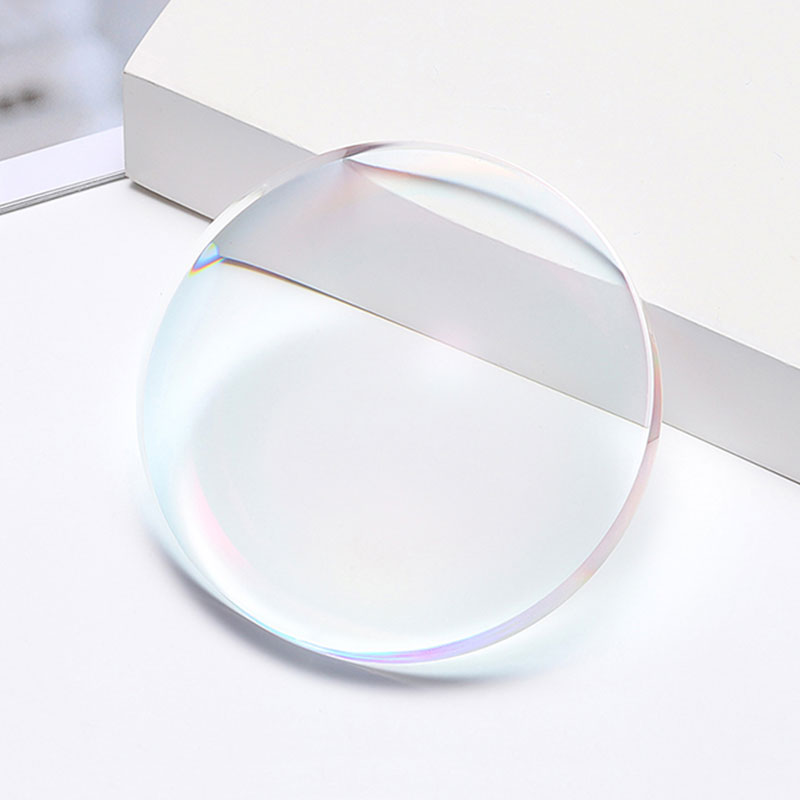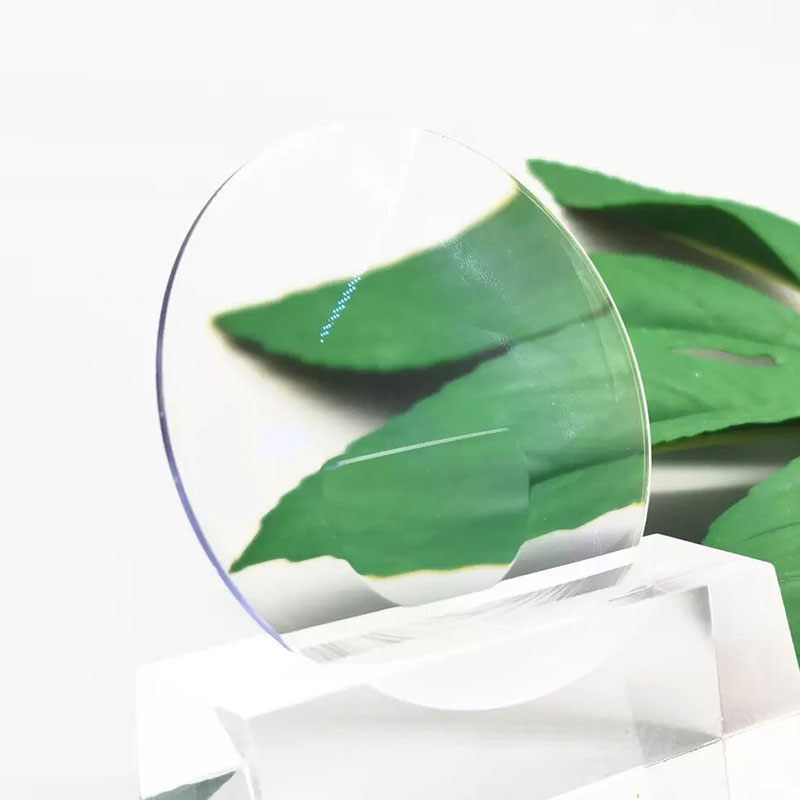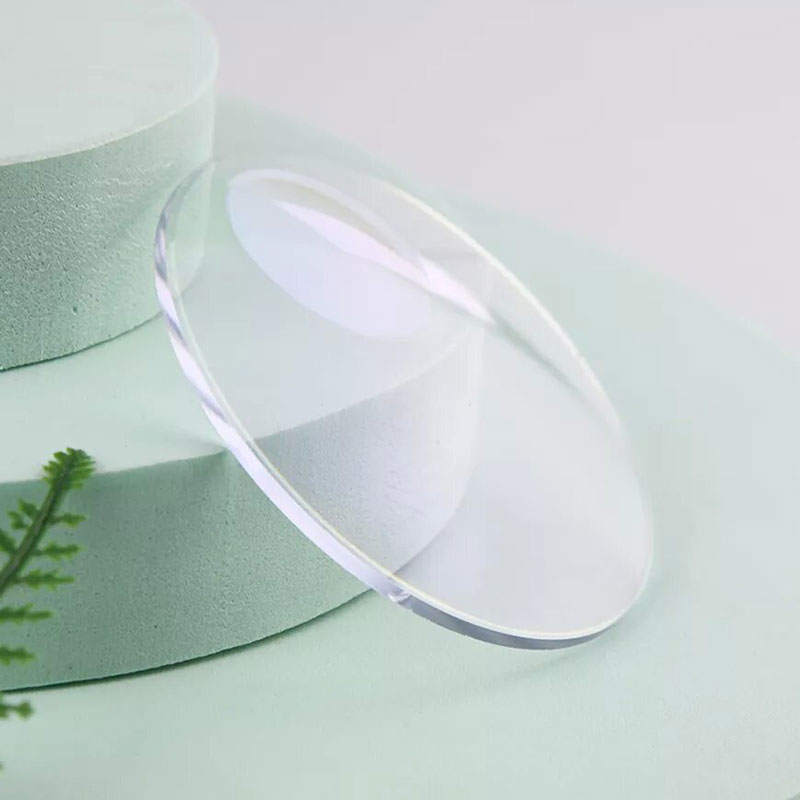Introduction
In today’s digital world, we’re constantly exposed to screens—whether it’s our smartphones, computers, or televisions. While technology has undoubtedly enhanced our lives, it has also introduced concerns about the impact of blue light on our health. Blue light, which is emitted by digital devices as well as the sun, has been linked to issues like eye strain, disrupted sleep, and even long-term eye damage.
This has led to the rise of Blue Block Lens, a popular solution designed to filter or block blue light and reduce its potential harmful effects. These lenses are marketed as a way to reduce eye strain, improve sleep quality, and protect our eyes from the blue light emitted by digital screens.
What is Blue Light?
Blue light is a type of visible light with a short wavelength and high energy. It sits at the violet-blue end of the visible spectrum, just before ultraviolet (UV) light, which is invisible to the human eye. Because of its high energy, blue light has the ability to penetrate deep into the eye and reach the retina, which makes it a topic of increasing concern as we spend more time in front of digital screens.
Sources of Blue Light
1. Natural Sources: The Sun
Blue light is naturally present in sunlight and accounts for a significant portion of the visible light we encounter every day. In fact, sunlight contains all the colors of the visible spectrum, including blue light, which gives the sky its characteristic blue color due to scattering in the atmosphere.
Sunlight is by far the largest natural source of blue light, and our eyes have evolved to handle the exposure. During daylight, we are exposed to varying levels of blue light depending on the time of day and weather conditions. For example, blue light exposure tends to be stronger around midday when the sun is at its peak.
2. Artificial Sources: Digital Screens
In modern times, artificial sources of blue light, particularly from digital devices, have become a major part of our daily lives. The most common culprits are:
-
Smartphones and Tablets: These devices emit high amounts of blue light, especially when used for extended periods.
-
Computer Screens: Whether for work, entertainment, or gaming, we spend hours in front of computer screens, which also emit significant blue light.
-
LED Lighting: LED bulbs, commonly used in homes and offices, are another source of blue light, though they typically emit lower levels compared to digital screens.
The sheer amount of time we spend using these devices means that we are constantly exposed to blue light. The problem is not just the amount of exposure, but also the timing—much of this exposure happens at night when our bodies are preparing for rest.
Effects of Blue Light on Health
Blue light, in moderate amounts, is not inherently harmful. However, excessive exposure—especially at night—has been linked to a variety of health concerns, particularly regarding our eyes and sleep patterns.
1. Disrupting Sleep and Melatonin Production
One of the most significant concerns regarding blue light is its effect on sleep. Exposure to blue light, particularly in the evening, can disrupt our circadian rhythm, the natural 24-hour cycle that regulates our sleep-wake patterns.
Blue light has been shown to suppress the production of melatonin, a hormone that helps us fall asleep. This disruption can make it harder to fall asleep, leading to poor-quality sleep or insomnia. Studies suggest that even just two hours of blue light exposure from screens before bedtime can reduce melatonin levels, making it harder to both fall asleep and stay asleep throughout the night.
2. Digital Eye Strain
Spending long hours in front of digital devices can lead to a condition called digital eye strain (DES), which has become increasingly common as screen time continues to rise. Symptoms of digital eye strain include:
-
Eye fatigue
-
Dry eyes
-
Blurred vision
-
Headaches
-
Neck or shoulder pain (due to poor posture)
One of the primary contributors to digital eye strain is blue light, which can cause discomfort by overstimulating the retina and the muscles in the eye. Blue light is scattered more easily than other wavelengths, making it harder for the eye to focus, which leads to increased strain.
In addition to the discomfort caused by prolonged screen use, blue light is thought to contribute to long-term retinal damage, which may increase the risk of conditions like macular degeneration as we age.
3. Potential Long-Term Effects on Eye Health
While the research on blue light's long-term effects is still ongoing, there are concerns about its potential role in causing eye damage over time. Some studies have suggested that prolonged exposure to blue light may contribute to retinal damage by increasing oxidative stress in the eye. Oxidative stress occurs when harmful free radicals accumulate in the body, leading to cellular damage.
Although there is no definitive evidence yet linking blue light to irreversible damage like macular degeneration, many eye care professionals recommend reducing exposure, particularly in high quantities, to minimize potential risks.
Is All Blue Light the Same?
Not all blue light is created equal. Blue light from natural sources, such as the sun, is different from the blue light emitted by digital devices. While natural blue light plays a crucial role in regulating our circadian rhythm and mood during the day, the blue light emitted by screens and artificial lighting lacks the balancing factors provided by sunlight, such as the natural variation in intensity throughout the day.
The timing and intensity of artificial blue light exposure are key factors that affect how it impacts our eyes and health. In particular, evening exposure to artificial blue light may pose the greatest risk to our sleep, since it interferes with our body's natural sleep-wake cycle.
The Role of Blue Block Lenses in Reducing Blue Light Exposure
Given the potential risks of blue light exposure, Blue Block Lenses are designed to reduce or filter out the harmful portion of blue light, especially the high-energy blue light emitted from digital screens. These lenses can help prevent digital eye strain, improve sleep quality by reducing melatonin suppression, and potentially reduce the long-term risks associated with prolonged screen exposure.
Benefits of Blue Block Lenses
As our daily exposure to digital screens continues to rise, so does the interest in solutions that can mitigate the negative effects of blue light. Blue Block Lenses have emerged as a popular option for people looking to reduce eye strain, improve sleep quality, and protect long-term eye health. These lenses are designed to filter out or block a portion of blue light, particularly the high-energy blue light emitted by digital devices, and are promoted as a way to help reduce discomfort and protect our eyes from the cumulative effects of screen time.
1. Reducing Eye Strain
One of the most immediate and noticeable benefits of Blue Block Lenses is their ability to reduce digital eye strain, a common complaint for anyone who spends prolonged hours in front of a screen. Digital eye strain, or computer vision syndrome (CVS), is a condition that can cause a variety of discomforting symptoms, including:
-
Eye fatigue
-
Dry or irritated eyes
-
Blurred vision
-
Headaches
-
Neck or back pain (often related to poor posture)
The primary cause of this discomfort is the overuse of digital devices, which leads to prolonged staring at screens that emit blue light. While blue light itself doesn’t directly cause eye strain, its short wavelength and high energy can make it harder for the eyes to focus properly. This leads to increased eye muscle tension, resulting in fatigue.
Blue Block Lenses work by filtering out a significant portion of this high-energy blue light, reducing the strain on the eyes and promoting more comfortable, prolonged screen use. By reducing the amount of blue light entering the eye, these lenses can help minimize discomfort and improve overall visual clarity.
Many people report feeling less tired after using Blue Block Lenses, and some studies have shown that these lenses can help users maintain visual comfort throughout the day, particularly for those who work long hours in front of a computer or smartphone.
2. Improving Sleep Quality
As mentioned earlier, blue light exposure, especially at night, can have a detrimental effect on our sleep patterns. Blue light interferes with the production of melatonin, the hormone that regulates our sleep-wake cycle. Melatonin signals the body that it's time to rest, but exposure to blue light—particularly in the evening—can trick the brain into thinking it’s still daytime, thus delaying the onset of sleep and reducing sleep quality.
Research has shown that the use of Blue Block Lenses can help mitigate this issue. These lenses filter out blue light, especially in the evening when blue light exposure is most disruptive to sleep. By blocking blue light and reducing its effect on melatonin levels, Blue Block Lenses can help you:
-
Fall asleep more easily
-
Stay asleep throughout the night
-
Improve the overall quality of your rest
In fact, some brands of Blue Block Lenses are specifically designed to be worn in the evening, right before bedtime. These lenses, sometimes referred to as “Blue Block Lenses for sleep,” are designed with lenses that block a higher percentage of blue light to promote better sleep, allowing you to wind down without the interference of screen time.
3. Alleviating Headaches
Another common complaint among people who spend extended time on digital devices is headaches, which often result from prolonged eye strain. Blue light, combined with the strain caused by focusing on digital screens for long periods, can contribute to tension headaches, especially in people who already suffer from migraine conditions.
The high-energy nature of blue light can cause the eye muscles to work harder, leading to fatigue and tension in the head, neck, and shoulders. For individuals who are particularly sensitive to light or prone to migraines, Blue Block Lenses may provide relief by filtering out blue light and reducing the overall strain on the eyes.
While Blue Block Lenses are not a guaranteed cure for headaches, many users report experiencing fewer headaches after using the lenses regularly. By reducing the overall discomfort associated with digital eye strain, Blue Block Lenses can help prevent the buildup of tension that often leads to headaches.
4. Long-Term Eye Health Protection
One of the more serious potential benefits of Blue Block Lenses is the protection they may offer against long-term damage to the eyes. Blue light has been linked to retinal damage in animal studies, and there are concerns that prolonged exposure to high-energy blue light from digital screens could contribute to the development of macular degeneration, a condition that can lead to vision loss in older adults.
While research on the long-term effects of blue light exposure in humans is still ongoing, some experts suggest that Blue Block Lenses could play a role in protecting the eyes from cumulative damage over time. By blocking a portion of the harmful blue light, these lenses may reduce the oxidative stress on the retina and lower the potential for long-term damage.
However, it’s important to note that more research is needed to definitively prove the role of blue light in the development of age-related macular degeneration or other eye diseases. Still, protecting the eyes from excessive exposure to blue light seems like a smart precaution, especially as screen time continues to increase.
5. Enhancing Visual Comfort and Clarity
In addition to reducing strain and discomfort, Blue Block Lenses can enhance visual comfort and clarity, especially in low-light environments. Blue light tends to scatter more than other wavelengths, which can cause blurry vision, especially when you're reading or working on screens for extended periods.
By filtering out the most problematic blue light, Blue Block Lenses can help improve visual contrast, making text and images sharper and easier to see. This can be particularly beneficial for people who work in environments where they need to focus on text-heavy tasks, like writing, coding, or graphic design.
Additionally, the reduced glare from blue light may make it easier to use digital devices for longer periods without feeling fatigued, improving productivity and focus.
Do Blue Block Lenses Really Work? – The Science
As Blue Block Lenses continue to grow in popularity, one of the most pressing questions people have is: Do these glasses actually work? To answer this question, it’s important to dive into the science behind blue light exposure, the mechanisms of blue light blocking, and the research on the effectiveness of these lenses.
The Science of Blue Light and Eye Strain
First, let’s review why blue light might cause discomfort in the first place. Blue light has a short wavelength, which allows it to carry more energy compared to other colors of visible light. This energy is what makes blue light more likely to scatter, causing it to be harder for our eyes to focus. This scattering can create visual discomfort, particularly when we’re staring at a digital screen for extended periods.
Additionally, because blue light reaches deeper into the eye than other wavelengths, it can place added strain on the retina. The result is digital eye strain, which manifests in symptoms like eye fatigue, dryness, blurred vision, and headaches. The idea behind Blue Block Lenses is simple: by blocking or filtering out a portion of the blue light, these lenses reduce the amount of strain on the eye, making it easier to focus and more comfortable to look at screens for longer periods.
The Impact on Sleep: The Role of Melatonin
One of the most well-researched effects of blue light is its impact on melatonin production and, by extension, sleep quality. As we discussed earlier, exposure to blue light in the evening—especially from digital screens—disrupts the body’s natural circadian rhythm by suppressing melatonin levels. Melatonin is the hormone that signals to our brain that it's time to sleep, and reduced production can lead to delayed sleep onset and poorer-quality rest.
Several studies have investigated how Blue Block Lenses affect melatonin levels and sleep quality. A 2015 study published in Journal of Adolescent Health found that participants who wore blue light-blocking glasses for 3 hours before bed showed significantly higher melatonin levels compared to those who did not wear the glasses. The results indicated that blocking blue light before bedtime improved the timing of sleep, making it easier for participants to fall asleep and stay asleep throughout the night.
Similarly, a 2020 study in the Journal of Clinical Sleep Medicine found that wearing blue light blocking glasses reduced sleep disturbances and helped participants maintain a more consistent sleep-wake cycle. The researchers concluded that these glasses could be particularly helpful for people who work late or use screens extensively before bed, suggesting they could be a practical tool for improving sleep hygiene.
Reducing Eye Strain: Evidence from Clinical Studies
A number of clinical studies have looked into the effectiveness of Blue Block Lenses in reducing digital eye strain. In a 2017 study published in the Journal of Ophthalmology, participants who wore blue light-blocking glasses while using digital devices for several hours each day reported significantly less eye strain, dry eyes, and blurry vision compared to those who wore regular glasses or no glasses at all.
Another 2018 study in The Clinical and Experimental Optometry Journal found that participants who wore blue light-blocking lenses while using computers for work showed a notable reduction in eye discomfort. The study participants also experienced fewer symptoms of headaches, which are often associated with digital eye strain.
While the scientific community generally agrees that Blue Block Lenses can help reduce digital eye strain, it's important to recognize that the degree of improvement can vary depending on the individual. Some people may experience significant relief, while others may notice only a slight difference. This variability can depend on factors such as how much time you spend in front of screens, your existing eye health, and how sensitive you are to blue light.
Conflicting Research and Limitations
Despite the promising evidence, there are some studies that question the overall effectiveness of Blue Block Lenses. For instance, a 2019 study published in Ophthalmic and Physiological Optics found that blue light-blocking glasses did not significantly reduce eye strain or improve visual performance in participants using digital devices. This suggests that while Blue Block Lenses may help alleviate symptoms for some, they may not be a "one-size-fits-all" solution for everyone.
One possible explanation for these mixed results is the complexity of digital eye strain itself. While blue light is one contributing factor, it is not the sole cause of eye strain. Other factors—such as screen glare, poor posture, and inadequate lighting—can also contribute to discomfort. Therefore, Blue Block Lenses might help reduce one aspect of eye strain but may not fully address all the factors involved.
Furthermore, research on the long-term effects of blue light exposure is still relatively new. While some studies have suggested that blue light may contribute to retinal damage and increase the risk of age-related macular degeneration, there is not yet enough evidence to confirm these claims. Most of the current research on Blue Block Lenses focuses on short-term benefits, like alleviating eye strain and improving sleep, but their long-term efficacy in protecting against eye disease remains an area of ongoing investigation.
Blue Block Lenses vs. Other Solutions
It's also worth considering how Blue Block Lenses compare to other methods of reducing digital eye strain. For example, some people choose to use screen filters or enable blue light reduction settings on their devices, which can also help reduce blue light exposure. While these alternatives may offer some relief, they may not be as effective in blocking the full spectrum of blue light as Blue Block Lenses do.
Additionally, making lifestyle changes like taking regular screen breaks (e.g., the 20-20-20 rule, where you look at something 20 feet away every 20 minutes for 20 seconds) and ensuring proper lighting while working can help mitigate eye strain as well. Therefore, Blue Block Lenses can be an effective tool, but they should be seen as part of a broader strategy for managing screen time and reducing eye strain.
|
Topic |
Description |
Key Findings |
Limitations/Conflicting Research |
|
Science of Blue Light & Eye Strain |
Blue light scatters more easily, making it harder for the eyes to focus, leading to digital eye strain (DES). It’s thought to contribute to visual discomfort. |
Blue light causes eye strain, fatigue, and blurry vision. Blue Block Lenses help reduce eye strain by filtering out this high-energy light. |
The degree of improvement may vary depending on the individual. Other factors like screen glare and poor posture also contribute to eye strain. |
|
Impact on Sleep & Melatonin |
Blue light exposure, especially before bed, suppresses melatonin production, disrupting circadian rhythms and affecting sleep quality. |
Studies show that Blue Block Lenses help increase melatonin production and improve sleep quality by blocking blue light in the evening. |
More research is needed to determine the long-term benefits for sleep, and not all studies show significant improvement. |
|
Eye Strain Reduction (Clinical Studies) |
Numerous studies suggest Blue Block Lenses reduce digital eye strain, improving visual comfort and clarity. |
A 2017 study showed Blue Block Lenses reduced eye discomfort, dry eyes, and blurred vision. Another study (2018) found a significant decrease in headaches. |
Some studies (e.g., 2019 study in Ophthalmic and Physiological Optics) found no significant improvement in eye strain with blue light-blocking glasses. |
|
Conflicting Research |
While most studies show benefits, there are conflicting findings on the overall effectiveness of Blue Block Lenses. Some research suggests no substantial difference. |
A 2019 study showed Blue Block Lenses didn’t reduce eye strain or improve visual performance significantly. |
The reasons behind the mixed results include variations in study design, the nature of eye strain, and the complexity of screen-induced discomfort. |
|
Long-Term Eye Health Protection |
Research on the long-term effects of blue light exposure is still in progress. It’s believed that prolonged exposure may increase the risk of macular degeneration. |
No definitive evidence yet linking blue light to macular degeneration in humans, but Blue Block Lenses may help protect eyes from potential damage. |
Long-term studies are needed to confirm whether blue light exposure is a significant factor in eye diseases like macular degeneration. |
|
Comparison with Other Solutions |
Blue Block Lenses are not the only way to manage eye strain. Alternatives include screen filters, reducing blue light settings on devices, and regular breaks. |
Lenses are often more effective at blocking a wider range of blue light than screen settings or filters. |
Combining Blue Block Lenses with other strategies (e.g., 20-20-20 rule, good posture) yields the best results. |
|
Overall Effectiveness |
Blue Block Lenses provide significant benefits in reducing digital eye strain and improving sleep for many users. |
They are a non-invasive, practical solution, especially when used alongside other strategies. |
Results can vary based on individual sensitivity to blue light and screen habits. More research is needed for long-term effects. |
Potential Side Effects and Considerations
While Blue Block Lenses offer numerous potential benefits, they are not without their considerations. Like any product or solution, it’s important to be aware of the potential side effects and limitations before committing to their use.
1. Color Distortion and Visual Discomfort
One of the most common concerns with Blue Block Lenses is the potential color distortion they can cause. These lenses typically have a slight yellow or amber tint that works to filter out the blue light emitted by digital screens. While this tint is effective in reducing blue light exposure, it can alter how colors appear, especially when viewing digital content like websites, photos, or videos.
For some users, this color shift can be noticeable and distracting. If you're working in fields that require color accuracy, such as graphic design, photo editing, or video production, the altered color perception could pose a problem. Even for casual users, the yellow tint might make images appear warmer, which could take some time to adjust to, especially for those who are used to the cooler tones of standard digital displays.
While many people find the slight tint to be a minor inconvenience, it’s something to consider, particularly if you need to maintain true-to-life color accuracy in your work or hobbies. Fortunately, some brands of Blue Block Lenses offer clear or lightly tinted lenses that aim to reduce blue light exposure without significantly altering color perception.
2. Visual Adaptation Period
Another consideration when using Blue Block Lenses is the adaptation period. If you're not used to wearing glasses or have never worn lenses that filter out specific wavelengths of light, it may take some time to adjust to the feeling and visual experience. Initially, you might notice that everything appears a bit warmer or different than you’re accustomed to. Some users may also experience slightly distorted vision, particularly when moving between different light sources, as the tint of the lenses can cause objects to appear dimmer or less sharp in certain lighting conditions.
This adaptation period is usually temporary, and most people adjust to wearing Blue Block Lenses after a few days of use. However, for those who are sensitive to changes in visual clarity, the initial discomfort may be enough to discourage consistent use.
3. Over-Reliance on Lenses
While Blue Block Lenses can be effective in reducing digital eye strain, they should not be viewed as a cure-all for the discomfort caused by excessive screen time. Relying solely on Blue Block Lenses without addressing other factors that contribute to eye strain can limit their effectiveness.
For example, poor posture, inadequate lighting, and staring at a screen for long periods without taking breaks are all significant contributors to digital eye strain. Blue Block Lenses may reduce the amount of blue light exposure, but they won’t address issues like poor ergonomics or the need to blink more frequently to prevent dry eyes.
To maximize the benefits of Blue Block Lenses, it's important to combine them with other strategies, such as:
-
Taking frequent screen breaks (e.g., the 20-20-20 rule)
-
Using proper lighting in your workspace
-
Maintaining good posture to avoid neck and back pain
-
Adjusting screen brightness and contrast to reduce glare
-
Practicing eye exercises to reduce fatigue
While Blue Block Lenses can help manage digital eye strain, they work best as part of a holistic approach to eye health.
4. Not a Substitute for Comprehensive Eye Care
Although Blue Block Lenses offer specific benefits, they are not a substitute for regular eye exams or comprehensive eye care. If you’re experiencing persistent eye discomfort, headaches, or vision problems, it’s important to consult an eye care professional for a thorough evaluation.
An optometrist or ophthalmologist can identify underlying conditions such as refractive errors (e.g., nearsightedness or farsightedness), dry eye syndrome, or binocular vision issues that may be contributing to your symptoms. These conditions may require prescription glasses, specific treatments, or exercises to address the root causes of your discomfort, rather than relying solely on Blue Block Lenses.
Moreover, while Blue Block Lenses may reduce digital eye strain, they are not specifically designed to correct vision issues or protect against serious eye diseases like cataracts or glaucoma. Regular eye check-ups are essential for maintaining overall eye health and addressing any potential issues before they become more serious.
5. Limited Long-Term Research
Another important consideration when it comes to Blue Block Lenses is the limited long-term research on their effectiveness in preventing long-term eye damage. While there is substantial evidence supporting the idea that Blue Block Lenses can reduce digital eye strain and improve sleep quality, research on their role in protecting against age-related conditions like macular degeneration is still ongoing.
Most of the current research has focused on short-term benefits, such as alleviating discomfort from screen use and improving sleep, but more studies are needed to determine whether wearing Blue Block Lenses over long periods will have any significant impact on reducing the risk of chronic eye diseases.
For now, it’s safe to say that Blue Block Lenses are a helpful tool for managing digital eye strain and improving comfort during screen use. However, if you’re concerned about the long-term health of your eyes, it’s best to combine them with other preventive measures, such as limiting screen time, practicing good eye hygiene, and scheduling regular eye exams.
6. Potential Overuse and Misconceptions
As Blue Block Lenses become more popular, there’s a risk of overuse or misconceptions about their benefits. Some people might believe that simply wearing these glasses will provide complete protection from the effects of digital screens, leading them to neglect other important aspects of eye health.
It’s also worth noting that not everyone needs Blue Block Lenses. For those who spend only a few hours a day in front of a screen, or who don't experience significant symptoms of digital eye strain, these lenses may not be necessary. As with any health product, it’s important to assess your own needs and consult with an eye care professional to determine if Blue Block Lenses are the right solution for you.
|
Potential Side Effect/Consideration |
Description |
|
Color Distortion and Visual Discomfort |
Blue light blocking lenses often have a slight yellow or amber tint, which can distort colors, especially when viewing digital content (websites, photos, or videos). This might be bothersome for those needing color accuracy, such as graphic designers or photographers. |
|
Visual Adaptation Period |
When first wearing Blue Block Lenses, it may take some time to adjust to the new visual experience. This adaptation period can cause temporary discomfort, such as dimmer or less sharp visuals, which usually subsides after a few days. |
|
Over-Reliance on Lenses |
Relying solely on Blue Block Lenses without addressing other contributing factors (like poor posture, screen glare, or long screen time) can limit their effectiveness. To achieve the best results, it’s important to combine them with other strategies, such as taking regular breaks and improving lighting. |
|
Not a Substitute for Comprehensive Eye Care |
Blue Block Lenses do not replace regular eye exams or comprehensive eye care. If you experience persistent eye discomfort or vision problems, it's essential to consult with an eye care professional. The lenses don’t correct refractive errors like nearsightedness or farsightedness. |
|
Limited Long-Term Research |
While studies support the short-term benefits of Blue Block Lenses for reducing digital eye strain and improving sleep, research on their long-term impact on eye health (e.g., preventing macular degeneration) is still ongoing. |
|
Potential Overuse and Misconceptions |
As Blue Block Lenses become more popular, some people may overestimate their benefits and rely on them exclusively. These lenses are helpful for specific issues, but they shouldn’t be viewed as a one-stop solution for all digital eye strain problems. |
Choosing the Right Blue Block Lenses
With the growing demand for Blue Block Lenses, there’s a wide variety of options on the market, each offering different features, styles, and benefits. Choosing the right pair can be overwhelming, especially with so many brands and lens types to choose from. The right pair of Blue Block Lenses can significantly improve your visual comfort and overall eye health, but it’s essential to consider various factors before making a purchase.
1. Lens Color and Blue Light Blocking Percentage
One of the first factors to consider when choosing Blue Block Lenses is the lens color and the amount of blue light they block. Blue Block Lenses come in a variety of lens colors, ranging from clear to yellow, amber, or even dark brown. The color of the lens can affect both the amount of blue light filtered out and the visual experience when using the lenses.
-
Clear Lenses: Clear lenses with a subtle blue light filter are designed for those who want to reduce eye strain while keeping color accuracy and clarity intact. These lenses generally block a smaller percentage of blue light compared to tinted lenses, making them a good choice for daytime use when you need to avoid excessive distortion in color or brightness.
-
Yellow or Amber Lenses: Yellow or amber lenses are more effective at filtering blue light and are ideal for use in dimly lit environments or when using screens at night. These lenses can block a higher percentage of blue light, but they may cause a noticeable change in color perception, making everything look warmer. They are best for evening use, especially before bedtime, to reduce melatonin suppression and promote better sleep.
-
Dark Brown or Red Lenses: Darker lenses, often used in computer glasses or gaming glasses, block the most blue light and provide the strongest protection. While they offer excellent blue light filtering, they also have the most significant effect on color accuracy. These lenses are ideal for those who experience severe eye strain or headaches from prolonged screen use.
When choosing a lens color, it’s important to think about when and how you’ll be using your Blue Block Lenses. If you need them for extended screen use during the day, clear lenses with a mild filter are a good option. For evening use or before bedtime, yellow or amber lenses will help protect your sleep cycle.
- Blue Light Blocking Percentage: The effectiveness of a pair of Blue Block Lenses is determined by the percentage of blue light they block. While lenses can filter out anywhere from 10% to 90% of blue light, higher percentages offer more protection against digital eye strain and sleep disruption. However, it’s important to balance the amount of blue light blocked with the potential for color distortion. Many lenses are marketed as blocking 30%, 50%, or even 90% of blue light, so it’s essential to choose based on your specific needs and tolerance for color changes.
2. Frame Style and Fit
The next consideration when selecting Blue Block Lenses is the frame style and fit. Glasses that are comfortable to wear are essential, especially if you plan to wear them for extended periods. Whether you need them for work, gaming, or casual use, a good fit is crucial for both comfort and effectiveness.
-
Frame Material: Frames come in a variety of materials, including plastic, metal, and acetate. Plastic frames tend to be lightweight and comfortable, while metal frames offer a more durable and flexible option. Acetate frames are stylish and available in a variety of colors, making them a popular choice for fashion-conscious consumers.
-
Shape and Size: Choose a frame shape that fits the shape of your face. Common shapes include round, square, rectangular, and cat-eye. The right frame shape will not only suit your facial features but also provide a comfortable fit. Pay attention to the size of the frame, too. Glasses that are too large or too small may cause discomfort and may not sit properly on your face.
-
Nose Pads and Temples: Look for glasses with adjustable nose pads, especially if you have a unique nose shape. This will ensure a secure and comfortable fit. Similarly, the temples (the arms of the glasses) should not dig into your ears or slide down your nose. A well-fitting pair will stay in place even during prolonged wear.
-
Style: Blue Block Lenses are available in a wide range of styles. Whether you prefer a classic, professional look or a more trendy, bold style, there are frames for every preference. Many brands offer sleek and modern designs that look stylish both at work and in casual settings. There are also more specialized styles for gamers or athletes, with additional comfort features and enhanced durability.
3. Additional Features and Considerations
While Blue Block Lenses primarily serve the purpose of reducing blue light exposure, many models come with additional features that can enhance the overall user experience. Here are some of the extra features to consider:
-
Anti-Reflective Coating: An anti-reflective (AR) coating reduces glare, making your lenses more comfortable to wear during screen use. It also helps improve visual clarity and reduces eye strain caused by reflections and bright lights. This is a particularly helpful feature if you use your lenses under artificial lighting or outdoors.
-
Scratch-Resistant Coating: A scratch-resistant coating will help protect your lenses from everyday wear and tear, extending their lifespan. If you plan to wear your lenses frequently, this feature is important to maintain lens clarity.
-
Blue Light Filtering for Specific Activities: Some Blue Block Lenses are designed for specific uses, such as gaming glasses or computer glasses. These lenses typically offer enhanced blue light protection and are optimized for reducing glare and improving visual contrast. For gamers, these lenses may also improve performance by providing clearer visuals and reducing the strain of long gaming sessions.
-
Polarized Lenses: While not common in most Blue Block Lenses, polarized lenses can be found in some models designed for outdoor use. Polarization reduces glare from reflective surfaces like water or roads, which can be useful for people who spend time using screens outdoors.
4. Considerations for Prescription Lens Wearers
If you wear prescription glasses, you might wonder if you can find a pair of Blue Block Lenses that works with your prescription. Fortunately, many brands offer the option to add blue light blocking filters to prescription lenses. This allows you to enjoy the benefits of blue light blocking without sacrificing your vision correction needs.
When purchasing Blue Block Lenses for prescription wearers, consider the following:
-
Prescription Compatibility: Ensure the brand offers customization options for prescription lenses. Some companies will replace standard lenses with your prescription, while others offer clip-on blue light filters that can be attached to your existing prescription glasses.
-
Lens Type: If you need bifocals, progressives, or other specialized lenses, make sure the brand offers compatible options. Some Blue Block Lenses are available with different lens types, including single vision, bifocal, and progressive lenses.



 English
English Español
Español

